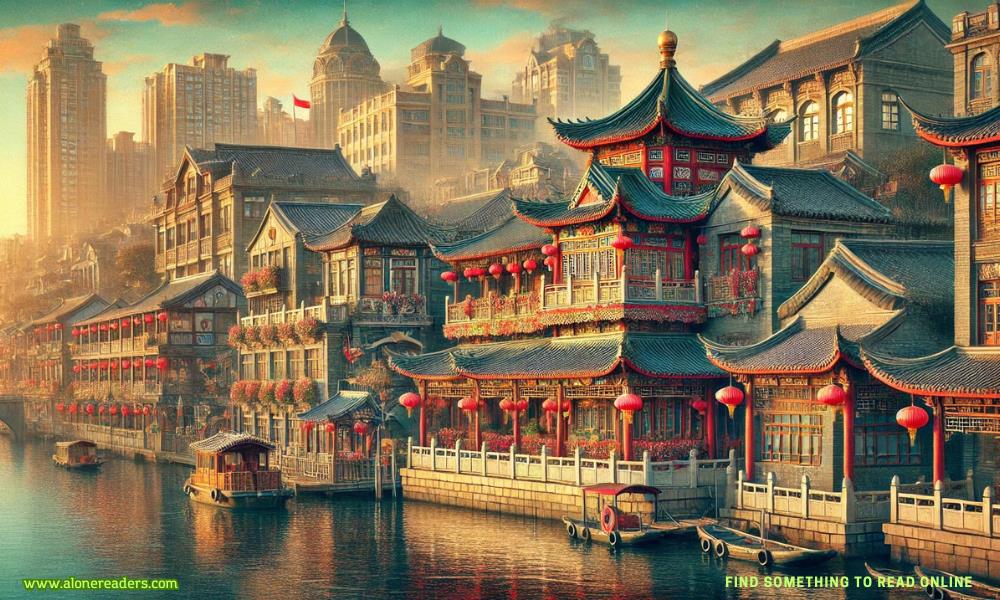
Tianjin, one of China’s most significant port cities, stands as a remarkable fusion of Chinese tradition and colonial influences. Situated near the capital, Beijing, this vibrant metropolis offers a unique blend of ancient Chinese culture and modern urban development, intertwined with historical remnants of foreign occupation. Whether you're a history enthusiast, a lover of architecture, or someone seeking a different side of China, Tianjin offers an unforgettable experience.
Tianjin's charm lies in its seamless blend of East and West, with well-preserved colonial buildings standing proudly alongside traditional Chinese temples and modern skyscrapers. As you wander through its streets, you'll notice how the city has retained its historical roots while embracing the advancements of the 21st century.
The city's colonial history is vividly reflected in its architecture, particularly in the Five Great Avenues (Wudadao) area. Here, you’ll find a collection of well-preserved European-style buildings, dating back to the early 20th century. The French, British, Italian, and German architectural influences are visible, making this area a must-visit for those interested in history and architecture.
On the other hand, Tianjin’s Chinese heritage is best experienced in the Ancient Culture Street (Gu Wenhua Jie), where traditional Chinese shops, temples, and tea houses line the streets. This area is perfect for those who want to immerse themselves in Chinese culture, with opportunities to purchase traditional handicrafts, try local delicacies, and explore ancient temples.
The Five Great Avenues (Wudadao)
A visit to the Five Great Avenues is like stepping into Europe in the early 20th century. This area is a testament to Tianjin's colonial past, where foreign powers established their presence. The streets are lined with over 230 buildings featuring a mix of architectural styles, including Renaissance, Greek, Gothic, and Romanesque. Some notable buildings include the former residences of prominent figures from history, now turned into museums and exhibition halls.
Ancient Culture Street (Gu Wenhua Jie)
This pedestrian street is a haven for those interested in traditional Chinese culture. The street is lined with Qing Dynasty-style buildings housing shops selling everything from traditional Chinese medicine to intricate handicrafts. The street’s centerpiece is the Tianhou Palace, a temple dedicated to the goddess of the sea, Mazu. Visiting this area is like taking a step back in time, offering a glimpse into Tianjin’s past.
The Tianjin Eye
For a panoramic view of the city, a ride on the Tianjin Eye is a must. This giant Ferris wheel, built over the Hai River, offers breathtaking views of the cityscape, especially at night when the city is illuminated. It’s an ideal way to appreciate the city's blend of old and new from above.
Porcelain House
This unique museum is a perfect example of blending traditional Chinese art with modern creativity. The building is covered in over 4,000 pieces of ancient porcelain, crystals, and jade, creating a visually stunning masterpiece. Inside, the museum houses a vast collection of antiques, making it a must-visit for art lovers.
When traveling to Tianjin, it’s important to keep a few things in mind:
Tianjin is well-connected by air, rail, and road, making it easily accessible from various parts of China and abroad.
By Air: Tianjin Binhai International Airport (TSN) is the main airport serving the city. It offers domestic and international flights, making it a convenient entry point. From the airport, you can take a taxi or the airport shuttle bus to reach the city center. The taxi fare to the city center typically ranges from CNY 50 to CNY 100, depending on your destination.
By Train: Tianjin is connected to major cities like Beijing and Shanghai via high-speed trains. The Beijing-Tianjin intercity railway is particularly popular, with the journey taking just around 30 minutes. Tickets for this route range from CNY 55 to CNY 65.
By Bus: Long-distance buses are available from nearby cities, though trains are generally more convenient and faster.
Tianjin offers a wide range of accommodations to suit all budgets, from luxury hotels to budget-friendly hostels.
Luxury Hotels: The St. Regis Tianjin and The Ritz-Carlton, Tianjin, offer five-star accommodations with prices ranging from CNY 1,000 to CNY 2,500 per night. These hotels provide top-notch amenities, including fine dining restaurants, spas, and fitness centers.
Mid-Range Hotels: For travelers seeking comfort without splurging, hotels like the Tangla Hotel Tianjin and Holiday Inn Tianjin Riverside offer rooms priced between CNY 400 and CNY 800 per night. These hotels provide excellent services, including Western and Chinese dining options, and are conveniently located near major attractions.
Budget Accommodations: Hostels and budget hotels are plentiful in Tianjin, with prices ranging from CNY 100 to CNY 300 per night. Options like Tianjin Cloudy Bay Youth Hostel offer clean and comfortable stays, ideal for budget-conscious travelers.
Tianjin is renowned for its culinary delights, offering a mix of traditional Chinese dishes and international cuisine. Must-try local foods include:
Goubuli Baozi: These steamed buns filled with meat or vegetables are a Tianjin specialty. You can find them at various restaurants and street vendors, with prices ranging from CNY 10 to CNY 30 per serving.
Jianbing: A popular street food, Jianbing is a savory crepe filled with eggs, scallions, and a variety of sauces. It’s a delicious and inexpensive snack, typically costing around CNY 5 to CNY 10.
Seafood: Tianjin’s proximity to the coast means fresh seafood is abundant. Restaurants like South Beauty offer a range of seafood dishes, with meals costing between CNY 100 and CNY 300 per person.
Final Thoughts
Tianjin offers a rich tapestry of experiences, blending its Chinese heritage with its colonial past. Whether you're strolling through the European-style streets of Wudadao, exploring ancient temples on Ancient Culture Street, or enjoying a meal of Tianjin's famous cuisine, this city promises a unique journey through time and culture. With its welcoming atmosphere and diverse attractions, Tianjin is a destination that should be on every traveler’s list.